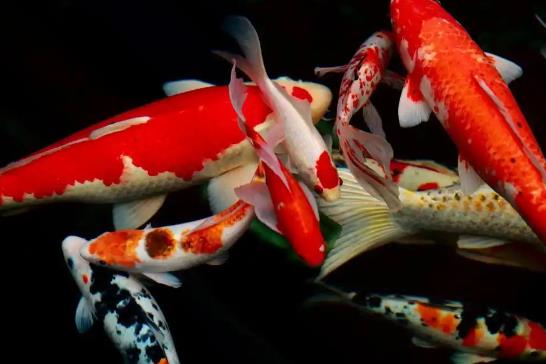The main reasons why koi don't eat are as follows:
Unsuitable water temperature: The optimal water temperature for koi is between 20°C and 28°C. When the water temperature is 25°C, koi have the largest food intake. Drastic fluctuations in water temperature can cause koi to stop eating.

Lack of oxygen in the water body: Koi have poor tolerance to oxygen deficiency. Especially in a small environment, they need to be supplied with oxygen 24 hours a day. Changes in temperature and air pressure may also lead to oxygen deficiency.
Environmental adaptation issues: Newly bought koi may show wariness due to unfamiliarity with the new environment, resulting in not eating. In this case, it usually takes a few days for them to adapt to the new environment.
Disease problems: Koi may be infected with parasites or suffer from saprolegniasis, leading to poor respiration and a reduced appetite. At this time, the water temperature needs to be raised and antibacterial and anti-parasite drugs should be used.
Water quality problems: Poor water quality or a fish tank that is not cleaned in a timely manner can cause koi to lose their appetite. Keeping the fish tank clean and maintaining stable water quality are important measures to prevent koi from having a poor appetite.
Monotonous food: Feeding a single type of food for a long time can cause koi to lose their appetite. Trying to change the types of food or feeding a mixture of foods can alleviate this situation.
Overfeeding: Frequent feeding results in a large amount of food remaining at the bottom of the water, making the water body eutrophic. Koi are in a full state and have no sense of hunger.
Stress problems: Operations such as changing the water in the fish tank, moving the fish tank, or adding new fish may startle the koi, causing them to lose their appetite. Keeping the breeding environment stable can avoid this situation.
The solutions include:
Maintain stable water temperature: Avoid drastic fluctuations in water temperature and ensure that the water temperature is between 20°C and 28°C.
Supply oxygen in a timely manner: Ensure that there is sufficient oxygen in the water body. Especially in a small environment, 24-hour oxygen supply is required.
Check for diseases: Regularly check the physical condition of koi and treat diseases in a timely manner.
Change the food: Try to change the types of food or feed a mixture of foods to avoid feeding a single type of food for a long time.
Water quality management: Keep the fish tank clean, change the water regularly, ensure that the water is clear, and control the pH value between 7.2 and 7.5.
Feed in an appropriate amount: Avoid overfeeding, keep the water quality clean, and prevent the water body from becoming eutrophic.
